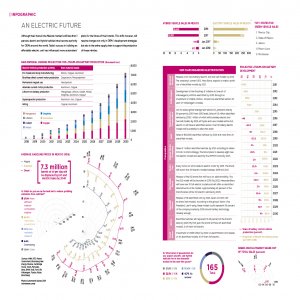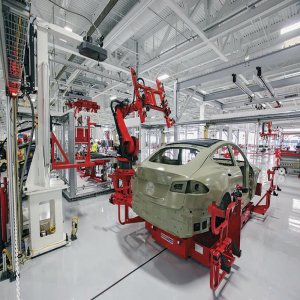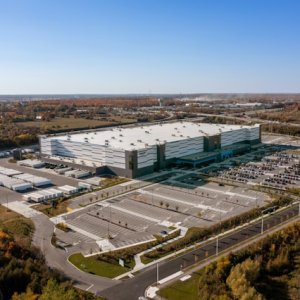Quetertaro’s Growing Road Network

STORY INLINE POST
Q: What sparked Queretaro’s need for more road infrastructure development in the past years?
A: Given Queretaro’s fast-growing industries such as aerospace, manufacturing and industrial development, transportation of goods is important. Our highways’ capacity is reaching its limits and that is why we must coordinate with local and state authorities to determine which projects should be developed. The only highway that existed 15 years ago was Highway MEX 57, which interconnected Laredo to Piedras Negras. Later, the Palmillas-Apaseo El Grande macrobeltway was constructed to ease traffic on Highway MEX 57. Vehicles headed to the Bajio region would use this macrobeltway to avoid crossing the city. Then the northeast and southwestern Queretaro beltways were created to also ease traffic. These three beltways have been the result of real-estate and industrial evolution in the Bajio region. Queteraro sees constant interaction between the federal road network and the state network and SCT works to follow trends of how the industry and its needs are evolving in the state.
Q: How does SCT Centro Querétaro identify the state’s road infrastructure needs?
A: SCT collects data and analyzes information such as transit volumes and vehicle classifications to carry out cost-benefit analyses. These analyses are then given to the Ministry of Finance to approve the budget for its development. When the Ministry agrees that the project is greatly needed and is viable, then it is presented in the Federal Expenditure Budget Proposal (PEF) for the next year. Before Congress approves the budget, the project must comply with the economic, social and technical requirements. The information SCT Centro gathers for the projects proposed to the Ministry of Finance ensures that these bring benefits to as many people as possible and offer a social and economic solution to the country.
Q: What new needs has SCT Centro Querétaro identified to boost the competitiveness of its road network and industries?
A: Conservation and maintenance is an important part of a road network. SCT Centro Querétaro’s role is to optimize resources and distribute them throughout the entire state. Highway MEX 57, for instance, is the main artery that interconnects the state to the rest of the country but it has reached its maximum capacity. This is one of the reasons why the capacity of the Paseo de la Republica section was expanded to its full capacity to 12 lanes and the Queretaro-Mexico section is being expanded to six lanes.
Although the macrobeltway has been in operation for only a year, it already has traffic volume of 11,000 vehicles a day, which means it should be expanded to 12 lanes. The northwest and southwest beltways could also be expanded to increase capacity. The State of Queretaro is also analyzing the development of another circuit toward the Queretaro International Airport.
Q: How are most road and highway projects funded in the state of Queretaro?
A: Most projects are funded through public financing from the Federal Expenditure Budget (PEF). SCT receives an annual budget that then distributes among states for different projects. Nevertheless, public budget varies greatly each year. Five years ago, we would construct MX$22 billion (US$1.2 billion) in federal roadways and in 2018 we constructed only MX$16 billion (US$850 million) due to Congress’ policies. Throughout 2018, the State of Queretaro will use MX$1.07 billion (US$57 million) to develop the new road network that includes presidential government commitments such as Bernal-Higuerillas (CG-091), Portezuelo-Palmillas (CG-082) and Paseo de la Republica (CG-092).
When we do have highways that are profitable, then the private sector is invited to participate. There are many projects in Mexico that are not necessarily profitable but they are socially important. The country always wants to make sure there is balance. Each state proposes its projects and the Ministry of Finance approves the resources. In Queretaro we currently do not have public-private associations (PPA), although our neighbor San Luis Potosi has a PPA for the maintenance and conservation of a of the MEX 57 highway. The macrobeltway was also constructed under a PPA scheme.
Q: What is the main challenge SCT Centro Querétaro encounters when developing new or improving already existing road infrastructure projects in Mexico?
A: The country has the financial capacity to construct but there are other factors that are causing projects to increase in costs and time. One of the main problems transport-infrastructure projects face is right of way (ROW), especially when developing projects in the Mexican highway network. When a highway is modernized and expanded, for example, the project may need to adjust its path. Years ago, modifications were far more modest and roads were constructed with high slopes for a much faster and cheaper construction. Nowadays many communities are claiming the historical ROW from highways that already exist. ROW has the power to derail a project, especially since many ejidos do not even have the proper documents to accredit the property.
An example in Queretaro is the Toyota manufacturing plan. The company had problems with the ROW for the El Castillo elevated highway crossing. Companies must hire large teams of lawyers and technical experts to obtain the rights. There are communities that are noble and cooperate but there are also many that want to abuse the system. The government allows us to tender projects if a certain percentage of the ROW has been liberated but projects are forced to a halt when the remaining ROW cannot be obtained. Construction teams must have a great deal of conviction to overcome all of the obstacles that they will face to finish the project.
Environmental permits are also playing a crucial role in the development of highway projects, which does not only include environmental impact studies but also changes in land use. To obtain the change in land use, the Ministry of Environment asks for the land purchase to be accredited. There are many laws that do not allow for progress in the development of infrastructure in the country. For example, to obtain an explosives permit to create a tunnel for a road, the process could take more than half a year as it goes through the various entities and levels of government.
Work unions also play an important role in the sector. The macrobeltway Palmillas-Apaseo el Grande is 86km long and it crosses through various municipalities in Queretaro and Guanajuato. Each municipality has its own construction work union that has its own rules and demands regarding the type of materials they want to use and where they should be purchased from. The country is not able to make the advance it wants due to the lack of commitment of some people. Whenever there is a change in the path, the government pays communities for these changes.
Q: How should the public and private sectors work together to accelerate the development of transport infrastructure?
A: Highways detonate economic growth and development and the National Infrastructure Plan wanted to transform the country into a logistics hub. In the six years of President Enrique Peña Nieto’s administration, 80 new highways and 26 beltways were constructed, of which most interconnected Mexico’s rural and urban areas.
As the construction industry continues to diversify, so do companies that have built Mexico from the ground up. An example of a great Mexican construction company is ICA. Whenever extra tasks or problems arose during projects, ICA always pitched in help to get the project moving and back on track. The industry is now composed of hundreds of smaller companies that want everything done for them when they win the tender. If the public and private sectors worked together, we would advance much faster as an industry.
SCT Centro Querétaro (SCT State Office Queretaro) is responsible for the planning, design, construction and conservation of transport and communications infrastructure throughout the state of Queretaro
























